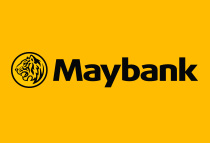Conventional and Islamic structures provide investment opportunities for those seeking an enhanced yield or additional returns in terms of coupon and interest.
What are the available structures?
Most structures provide principal protection for investments held to maturity, while some including a minimum return.
- Interest Rate–Linked Structures: Gives out return based upon the movement of interest rates (KLIBOR, LIBOR, etc). Only stipulated coupon is paid if certain conditions are satisfied and/or maintained.
- Debt–Linked Structures: Offers pay out based upon the yield on debt or fixed income securities.
- Foreign Exchange–Linked Structures: Disburse a return linked to particular currency or basket of currencies. A relatively short-term investment or deposits where the return is linked to the movement in the currency rates of the selected market or currency basket over the life of the deposits.
- Equity–Linked Structures: Pays a series of coupons linked to particular listed equity or basket of listed equities.
- Index–Linked Structures: Provides return based on the performance of indices (KLCI, Fund, etc). Also pays the quoted coupon if certain conditions are satisfied.
- Commodity–Linked Structures: Pays a return linked to the performance of a commodity or basket of commodities over a defined period. On the maturity of investment or deposits, investors receive the principal amount plus return, if any, based on the percentage change in the underlying commodity (or basket).
- Credit–Linked Structures: Offers exposure in performance of certain credit names without having to directly purchase the selected bonds.
- Hybrid Structures: Offers a return based on a performance of a combination of asset classes. Provides stable return and investors can benefit from diversified and mixed portfolio investments.
What are the benefits of applying?
Whether the deposits or investments are for short, medium, or long–term, investment in structured products can generally benefit in the following manner:
- Principal protection for NID form (only if held to maturity or call)
- Gain opportunity from potentially higher yielding assets or markets with limited downside risk exposure
- Minimum return of a portion of initial deposits (if held to maturity or call)
- Diversification through participation in various assets or markets with minimum or no cost
Risk Considerations
Before making investment decisions, a number of risk factors should be carefully and appropriately considered.
- Coupon Income Risk: If the reference or underlying assets do not satisfy the predetermined conditions during the life of the investment, the return can be lower, or even zero, as compared with the return on traditional deposits or fixed rate securities of comparable maturity and credit quality. Therefore these instruments may not be able to pay periodic interest. Not be suitable for investors who require regular income payments.
- Credit Risk: While most structures provide protection on principal, or a minimum return of initial investment upon maturity or if called, any such guarantee rests on the credit quality of the issuer. Most issuers are evaluated for credit quality by local and international rating agencies. Credit ratings reflect the independent opinions of the credit rating agencies and are not a guarantee of credit quality. In the case of default, an investor may lose all or part of the principal as well as any accrued interest.
- Liquidity Risk: While secondary market for these instruments is generally available, Maybank does not guarantee such a wholesale market will exist. Nevertheless Maybank will always provide liquidity for its structures for investors who may want to terminate them prior to maturity. However, these instruments should always be considered as a buy-and-hold investment. If sold prior to maturity, market conditions or changes in the credit quality of the issuer may cause the resale price to be lower than the purchase price.
- Call Risk: Most structures may be called by issuer (but not the investor except in certain cases) prior to maturity and thereby exposing investors to reinvestment risk. That is, if issuers decide to call in the structures, investors risk losing higher interest deposit or investment.
- Exchange Rate Risk: The value of investments denominated in currencies other than Ringgit will be affected by fluctuations in the currency markets.
 Maybank Corporate
Maybank Corporate Maybank Islamic
Maybank Islamic  Investment Banking
Investment Banking Business Banking
Business Banking SME Banking
SME Banking Asset Management
Asset Management Private Wealth
Private Wealth Premier Wealth
Premier Wealth ASPIRE
ASPIRE
 Customer Service
Customer Service